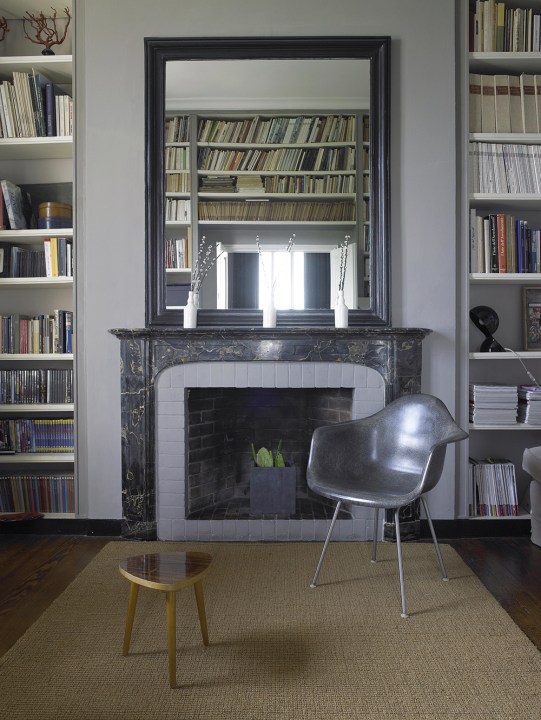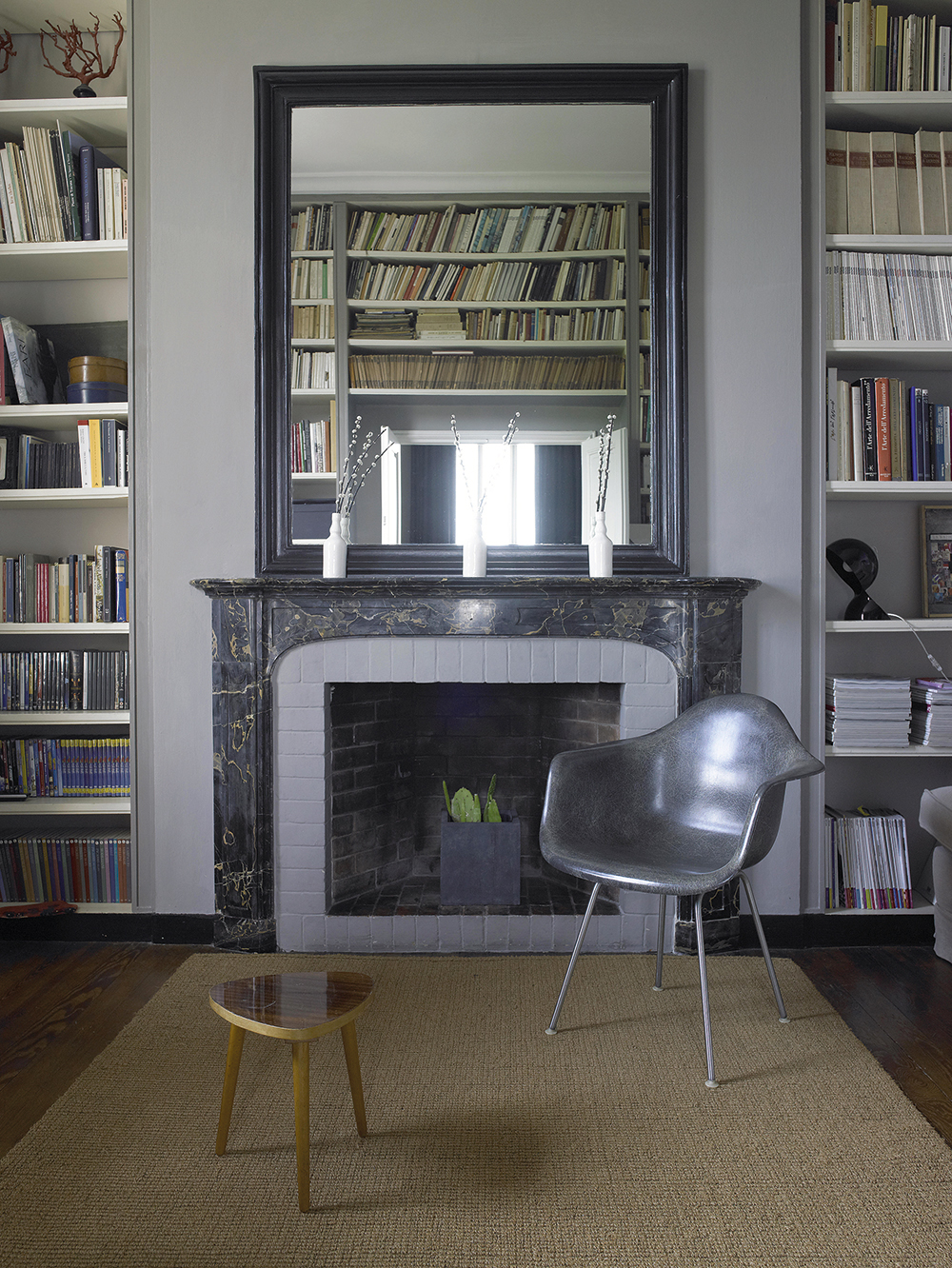
It is more than 40 years since Tom Wolfe said to me, in a Chinese restaurant on Manhattan’s Lexington Avenue, that ‘Modern’ had become an historical style label. He meant it was not, as the high modernists believed, the inevitable conclusion to all artistic progress, but had a beginning and an end as nearly precise as, say, Baroque or Rococo. And I should write a book about it, he added. This was a brilliant suggestion which I flubbed. I wrote about design instead.
But ‘modern’ and ‘design’ are inextricably linked. Franco Albini’s handrails for the Milan metro? Raymond Loewy’s Studebaker Avanti? Charles Eames’s chair, which he designed for Billy Wilder? Ubiquitous Apples? All are frequently cited as masterpieces of modern design. But what exactly is the property they have in common?
‘Design’ was the last style of the Analogue Era, even if its high priests rejected such a frivolous notion. It was a utopian cult with religious texts all of its own, not dissimilar in character to the Shakers or the Perfectionists (who believed they had designed the perfect shoe, unalterable and eternal). It was intended to be a cure for various ills. If we had more modern design, more beautiful and useful things, people would be happy. Luxury would be democratised and everyday objects would be aestheticised according to some rules which we can now see as being daft.
‘Form follows function’ they said, and suggested that when it did, beauty would result. But some things that are impressively functional, a B-52 bomber say, are beautiful only to those with specialist tastes. The people who fly those ruthless planes call them BUFF, which stands for Big Ugly Fat Fuckers. Or what about ‘truth to materials’ – a moral demand that makes sense if you are working with stone? But just what truth does graphene beg to express?
It really was mostly about exciting consumer desire by streamlining a fridge, or making clunky data compression technology into irresistible iPods. Steve Jobs said you know a design is good if you want to lick it, nicely suggesting an occult eroticism in these matters. This was what the Marxist critic Wolfgang Fritz Haug grumbled about – that design was a shameless accomplice of capitalist desire. Now with off-shoring, blurred national identities, the monetarisation of everything and a general weariness about material goods, here comes Maggie Gram to explain what happens next.
She is a writer and teacher who leads Google’s Experience Design Unit, or UX in the parlance. That’s ‘User Experience’. Her perspective is explicitly American, so readers will have to tolerate expressions such as ‘black tenure-track design faculty’ in what is otherwise a thoughtful and carefully argued book, even if the old modernist principle of less is more might profitably have been applied to the word count.
Gram begins with an engrossing chapter about the ceramicist Eva Zeisel, an adventuress and one-time lover of Arthur Koestler. She follows with an account of the career of Walter Dorwin Teague, one of the pioneer design consultants who set up shop in New York in the 1920s. Teague began as a draftsman of decorative borders for advertising but was soon designing gas compressors.
Gram has fun with the absurdity of this, because the innards of a gas compressor are invisible and have no need to be aestheticised. But this allows her to develop her central theme, which is that designers have a unique way of seeing and organising things, a vision that is either above or below reason but certainly not subject to it. In 1940, Teague published Design This Day – The Technique of Order in the Machine Age. Fifteen years later he designed the interior of the Boeing 707, establishing our common assumption of what the UX of jet travel should be.
The way designers can help in problem-solving is Gram’s preoccupation, as is the way design has evolved from being a simple description of what someone does, to a larger concept which may lead to Google creating a unified theory of it. But long before Silicon Valley, designers had seen the opportunity to apply creative principles not just to products but to whole organisations.
When IBM’s Thomas Watson asked his friend Eliot Noyes (a protégé of the Bauhaus founder Walter Gropius) what he should do about the messy look of his sprawling conglomerate, Noyes said: ‘You would prefer neatness’ – surely the most succinct management advice ever given. Noyes went on to supervise IBM’s products, graphics and architecture. This was called ‘corporate identity’ by Gordon Lippincott, the designer of Campbell’s soup’s red and white tin.
The great value in The Invention of Design is that Gram has thought long and hard about decision-making. She is especially interested in Herbert Simon, not a designer but a Nobel prize-winning ‘general problem-solver’. Of course, the problem with problem-solvers is that they tend not to find solutions but to restate problems in a new way. Thomas Piketty, gets a look in, too.
Design is essentially intuitive and not systematic. That Eames chair was inspired by a baseball mitt. You are not going to get that from Simon’s explanation that you must create ‘conditions for the existence of positive solution vectors for input-output matrices’. Try telling that to Jaguar Land Rover’s Gerry McGovern, who has taken inspiration from the sight of Lycra-clad bottoms on the exercise bike in front of him at the gym. You can see that in the fine surfacing of the latest Range-Rover.

Event
Speaker Series: An evening with Jeffrey Archer
Gram concedes that the results of applying scientifically determined design principles are mixed, at best. She discusses how problem-solving designers systematically failed to improve the troubled city of Gainesville, Florida, although similar methods did lead to an increase in legibility of American census forms, so that’s something.
In the 18th century, builders used pattern-books, which established standards, and this is why we all like Georgian architecture. But design doesn’t have fixed principles.
We work in the dark. We do what we can… we give what we have. Our doubt is our passion and our passion is our task. The rest is the madness of art.
Or so Henry James believed. And I agree.
This is a good and important book, even if it’s inconclusive. Weirdly, it has few pictures, demonstrating that design thinking is difficult to illustrate – a nice paradox. At the end, Gram seems almost humbled by her task of enlarging what design thinking can actually achieve. No need to worry! Design is unpredictable and its processes chaotic, led by people who won’t be told what to do. Just like the Baroque.








Comments